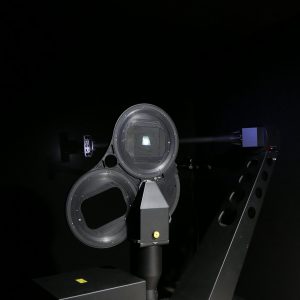
How were antique building interiors perceived under daylight illumination affected by the particular light scattering properties of Roman glazing?
In a joint effort of Lucerne University of Applied Sciences and Arts, Technische Universität Darmstadt, LVR-LandesMuseum Bonn, and Römisch-Germanisches Zentralmuseum Mainz, the light light scattering properties of fragments of Roman glazing were characterized. The BSDF of the samples was measured in the spectral range of visible light, and compiled into data-driven models for later application in the daylight simulation software Radiance.
Employing latest optical characterization techniques in the field of Cultural Heritage Predictive Rendering, the ongoing work by A Noback, J Komp, S Greiff and LO Grobe shall shed new light on the contemporary perception of buildings under natural illumination.
Preliminary results of the ongoing research have been presented at the conference Glass of the Caesars 30 in London, UK, organized by the Association for the History of Glass in conjunction with the British Museum.